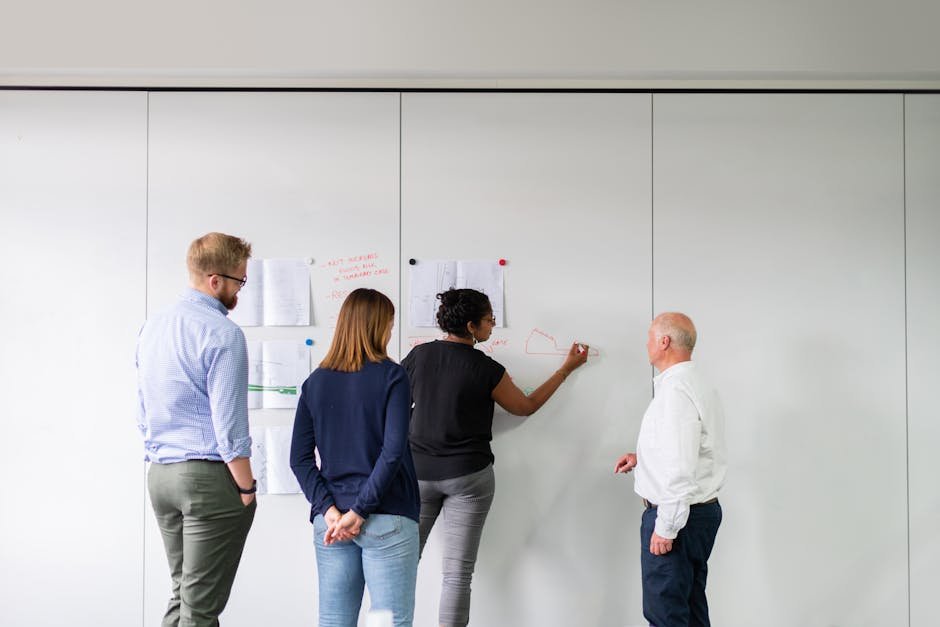Developing Lean-Agile Leadership: Core Skills and Strategies
In today’s fast-paced business environment, organizations are increasingly adopting Lean-Agile methodologies to stay competitive and efficient. However, the success of these methodologies hinges significantly on effective leadership. Developing Lean-Agile leadership involves honing specific skills and strategies that empower teams, enhance productivity, and drive continuous improvement. In this comprehensive guide, we’ll delve into the core skills and strategies necessary for successful Lean-Agile leadership.
Understanding Lean-Agile Leadership
Before diving into the skills and strategies, it’s crucial to understand what Lean-Agile leadership entails. Lean-Agile leadership is the practice of guiding organizations through Lean and Agile transformations, promoting a culture of flexibility, efficiency, and rapid response to change. According to a report by McKinsey & Company, companies that effectively implement Lean-Agile transformations see a 30-50% improvement in efficiency and a 20-30% increase in employee satisfaction.
Core Skills of Lean-Agile Leaders
Lean-Agile leaders require a unique set of skills to lead effectively. Here are some of the core skills:
1. Visionary Thinking
Lean-Agile leaders must possess the ability to see beyond the present and envision future possibilities. This involves setting a clear and compelling vision that aligns with organizational goals. Example: Consider Elon Musk, whose vision for sustainable transportation has driven Tesla’s success.
2. Servant Leadership
Servant leadership is at the heart of Lean-Agile methodologies. Leaders should prioritize the needs of their team members, fostering an environment where everyone feels valued and empowered. This approach not only boosts morale but also enhances productivity.
3. Emotional Intelligence
Emotional intelligence is critical in managing team dynamics and fostering a positive work culture. Leaders with high emotional intelligence can effectively communicate, empathize, and resolve conflicts, thereby building stronger teams.
4. Continuous Learning
Lean-Agile leaders must be committed to continuous learning and improvement. This involves staying updated with the latest industry trends, seeking feedback, and being open to change. Encouraging a learning culture within the team is also essential.
Strategies for Effective Lean-Agile Leadership
Alongside core skills, effective Lean-Agile leadership requires strategic approaches to guide teams and organizations through transformation.
1. Empower Teams
Empowering teams is a fundamental strategy in Lean-Agile leadership. This involves delegating authority, encouraging collaboration, and trusting team members to make decisions. A study by Harvard Business Review found that teams with a high degree of autonomy are 50% more productive than their counterparts.
2. Promote a Culture of Feedback
Feedback is crucial for continuous improvement. Leaders should establish regular feedback loops that allow team members to share insights, address challenges, and celebrate successes. This culture of feedback fosters transparency and drives innovation.
3. Implement Agile Frameworks
Implementing Agile frameworks such as Scrum, Kanban, or SAFe (Scaled Agile Framework) provides structure and clarity in executing projects. These frameworks promote iterative development, allowing teams to adapt quickly to changes and deliver value efficiently.
4. Focus on Value Delivery
Lean-Agile leaders should prioritize delivering value to customers. This involves understanding customer needs, aligning projects with customer expectations, and continuously seeking ways to enhance customer satisfaction.
Real-World Examples of Lean-Agile Leadership
To illustrate the impact of Lean-Agile leadership, let’s explore some real-world examples:
Spotify
Spotify, the music streaming giant, has successfully implemented Agile methodologies to scale its operations. The company uses a “Squad” model, where small, cross-functional teams are empowered to work autonomously, leading to rapid innovation and a flexible work environment.
ING Bank
ING Bank transformed its operations by adopting Lean-Agile principles. Through Agile coaching and restructuring, ING improved its time-to-market by 50% and enhanced customer satisfaction significantly.
Actionable Tips for Aspiring Lean-Agile Leaders
For those aspiring to become Lean-Agile leaders, here are some actionable tips:
1. Invest in Training and Development
Pursue certifications and training in Lean and Agile methodologies. This not only enhances your skillset but also provides valuable insights into implementing these practices effectively.
2. Foster Open Communication
Encourage open and transparent communication within your team. Regular check-ins, team meetings, and communication tools can help bridge gaps and enhance collaboration.
3. Embrace Change
Be adaptable and open to change. The Lean-Agile environment is dynamic, and embracing change is crucial for success. Encourage your team to innovate and experiment without fear of failure.
4. Lead by Example
Demonstrate the behaviors and values you expect from your team. Leading by example fosters trust and inspires your team to follow suit.
Conclusion
Developing Lean-Agile leadership is a journey that requires dedication, adaptability, and a deep understanding of core skills and strategies. By cultivating visionary thinking, servant leadership, emotional intelligence, and a commitment to continuous learning, leaders can effectively guide their teams through Lean and Agile transformations. Implementing strategies such as empowering teams, promoting feedback, and focusing on value delivery further enhances leadership effectiveness. As the business landscape continues to evolve, Lean-Agile leadership remains a critical component of organizational success.
By embracing these principles and strategies, leaders can foster a culture of innovation, collaboration, and excellence, paving the way for sustainable growth and competitive advantage. Whether you’re a seasoned leader or an aspiring one, the journey towards Lean-Agile leadership promises rewarding outcomes for you and your organization.












